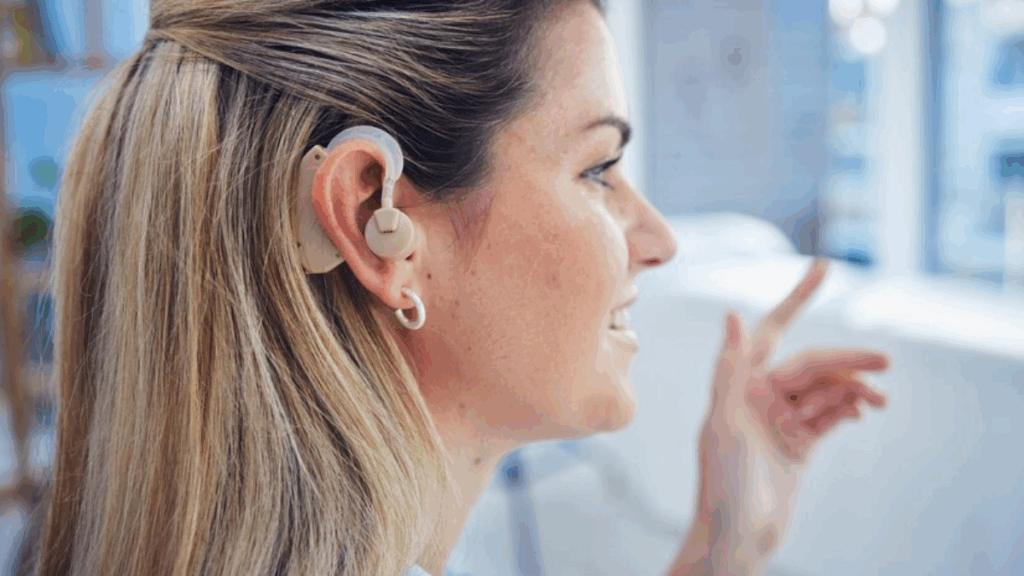
How to Use Hearing Aids – A Complete Beginner's Guide
Hearing aids represent powerful devices that bring sounds back to people who struggle with hearing since these devices restore connections to environmental noise. People who use hearing aids discover improved ease and pleasure when talking with others, alongside watching TV shows and listening to natural sounds like birds.
Knowledge about proper hearing aid usage will bring you the maximum benefits from your devices. Each step of using hearing aids, from initial fitting and daily care duties, will be explained in this guide. The knowledge of how your hearing device functions will lead to improved everyday hearing, even if you have sensorineural or conductive hearing loss.
How to Use Hearing Aids: Step-by-Step Instructions
When using hearing aids, the process becomes simple when you follow the steps necessary. Here’s how to begin! The process may vary slightly depending on the types of hearing aids you are wearing, but the steps are the same.
Inserting Your Hearing Aid Correctly
- Properly wearing your hearing aid ensures good sound and comfort.
- Wash and dry your hands before handling the device
- Carefully insert the ear tips into the ear canal until they fit
- Use a mirror to check the fit
- Do not force the device
If you want a detailed guide on this part, check our post on how to put in hearing aids.
Adjusting the Volume and Settings
Some hearing aids adjust sound automatically, while others allow you to do it manually.
Feature | Automatic Hearing Aids | Manual Hearing Aids |
Volume Control | Done by device | Use buttons or a dial |
Adapts to Surroundings | Yes | No |
Ease of Use | Very easy | Requires learning |
When starting, begin with quieter environments and slowly move to busier places. This helps your ears adjust to the new experience.
Tips for Getting Comfortable with Hearing Aids
Your First Week with Hearing Aids
In your first few days, you may experience sounds that you have never heard before or those that have just gotten louder. That is normal.
- Try wearing your hearing aids for a couple of hours each day at first.
- Slowly wear them longer as your ears adjust
- Rest your ears if they start to feel tired.
Practice in Real Situations
- Start using your hearing aids in a fairly simple environment, such as the living room. Then practice talking on the phone or going outside. Each one of these experiences will instil confidence in you.
Fixing Common Hearing Aid Problems
Even the best hearing aids can have small issues sometimes. Here are some of the most common issues and easy fixes for them.
Feedback or Whistling
This might occur should:
- The device is improperly fitted in the ear
- There is earwax blocking the ear canal
- The microphone has been covered
- Poor Sound Quality
Check to ensure that:
- Is the microphone blocked by dirt or wax?
- Are the batteries weak, or is there an issue with their placement?
- Is there an excessive amount of background noise in your immediate area?
Device Not Working
- Make sure the batteries are working
- Check if the device is dry and clean
- If nothing helps, it may be time to see a professional.
For more help on this, read our detailed blog on hearing aid problems.
Cleaning and Taking Care of Your Hearing Aids
If you value your device and want to retain its functionality for an indefinite period, then proper care is a must. Proper care can also save you some extra money; this is because cleaning methods may differ according to the type and cost of the hearing aid.
Daily Cleaning Routine
- Use a dry, soft cloth to wipe the hearing aid.
- Gently remove wax, if any, from the opening.
- Do not wash with water or use any sort of cleaner.
Battery Tips
- Take away disposable batteries at night.
- Keep the batteries in a cool, dry location.
- Rechargeable aids are supposed to be charged fully every night.
Storage
- Store in a dry case when not worn.
- Avoid keeping it anywhere hot or in the bathroom.
- If you can, use a hearing aid dehumidifier.
When to Visit an Audiologist
At times, a hearing aid requires a specialist’s advice and help. You should see a hearing professional if:
- You have trouble hearing clearly
- The hearing aids feel uncomfortable or painful in your ear
- The hearing aids keep falling out, or the aid lies loose in the ear
You could arrange a hearing test to update your hearing level and receive guidance from a qualified audiologist.
Conclusion
Learning to use hearing aids is simple and and dosnt involve major difficulty. Scheduled use together with proper maintenance will make you feel more confident about your device’s usage. This guide provides instructions that will help you reach the maximum performance of your device.
Delaying hearing assistance should not be your choice when hearing problems persist or when you are unsure of your auditory health. Contact experts either through professional audiologist consultations or hearing tests to get the help you require.
Frequently Asked Questions
No. Always remove your hearing aids before you sleep or bathe. Water could damage the hearing aid, and your ears need to rest.
Hearing aids should be wiped daily with a soft, dry cloth. Regular cleaning and maintenance will ensure that wax and other debris do not build up and interfere with the function and performance of the hearing aid.
Checks for common issues, like battery life, earwax plug, or dampness. If the hearing aid still works, call your audiologist for assistance.
Hearing aids will last for 4 to 7 years, depending on maintenance and care., Repairing early and doing regular maintenance will prolong the life of the hearing aid.
Most hearing aids contain features that will reduce the perception of tinnitus by increasing external sounds while the hearing aid is being worn.
Dr. Harshi, is an accomplished Audiologist with extensive expertise in treating individuals with hearing impairments.

